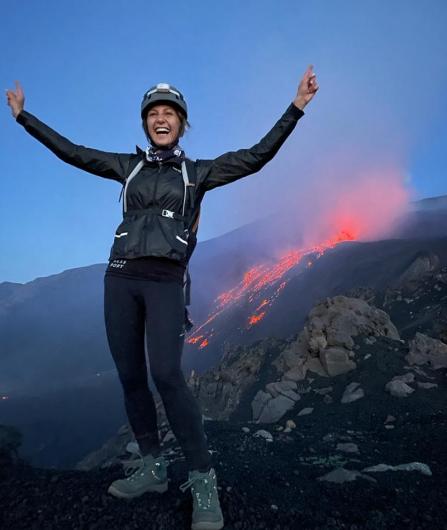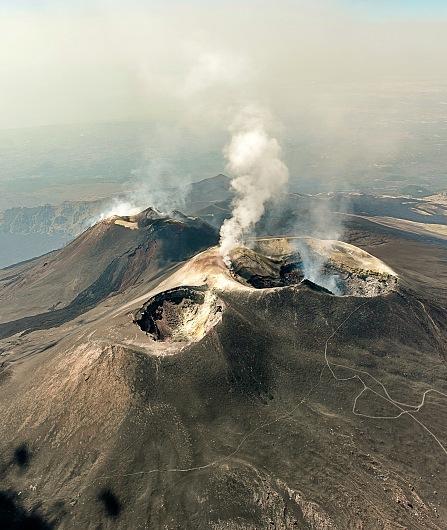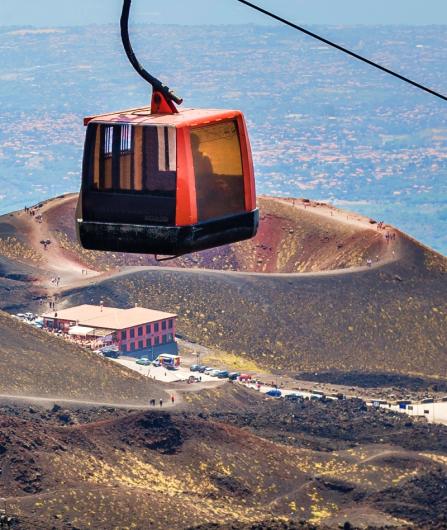Total lunar eclipse longer than the century: all you have to do to enjoy the show
On July 27, we will be able to admire in the sky a truly extraordinary spectacle: the longest total lunar eclipse of the 21st century. The Moon of blood, nickname given to our satellite during the lunar eclipses due to the characteristic red-orange color, the Moon will be accompanied by Mars in his fascinating voyage on the celestial vault. Not only will the red planet be within 7 degrees of the satellite, which will give rise to a spectacular astral conjunction with the moon, but it will also be in opposition, at the best time of the year, to observe it with the eye naked.
Etna3340 and Villa Dorata
To fully enjoy the show, offer you the sunset excursion on the volcano Etna. On the program: a tasting of typical products in Zafferana (honey, liqueurs), a 4x4 jeep excursion, a walk on craters at 1900 meters altitude and the descent of a lava tunnel accompanied by our guide. A unique and magical experience at sunset on the southern slopes of Etna.
After picking up a 4x4 jeep at your hotel, we will cross the villages on the flanks of Etna to join the South side. We will hike the craters at 1900 meters altitude to admire the fascinating colors of the sun that disappears behind the volcano and to witness the eventual eruptive activity (if present on the day of your visit). The dinner will be held in the charming Villa Dorata restaurant, former princely residence built in 1900. The menu is rich in flavors and essences of the Sicilian tradition: starter, pasta, dessert, coffee, water, wine Etna DOC. Thank you to tell us in advance if you want a vegetarian menu.
The visit will end with the descent into a lava tunnel, equipped with helmets and torches to discover how Etna forms lava tunnels during eruptions.
The schedules of the lunar eclipse of the century
In Italy, Friday, July 27, the total lunar eclipse will begin at 9:30 pm and end at 11:13 pm; it will be 103 minutes of great astronomical spectacle. The Moon will rise shortly before 8:30 pm, which will allow us to admire the total eclipse. The partial phenomenon will begin about an hour earlier, when the Moon begins to cross the crepuscular cone of the Earth at 19:14. It will be released at 1:28 on Saturday, July 28th. This is an extremely wide viewing window, which hopefully will not be spoiled by bad weather. In addition, the last significant total eclipse in Italy, that of 2015, in several regions was obscured by clouds.
Where to see the lunar eclipse
On July 27th, to see the moon rise at 8:26 pm, it will be necessary to look towards the southeast, the point from where it will begin its "ascent" towards the sky. On his right, you will find immediately Jupiter and Venus, rather low on the horizon, while to see appear Saturn, it will be necessary to wait for 21:00. The Moon accompanied by Mars (which will be visible just below the satellite) will make a bow not too high on the sky; at the time of maximum elevation, it will be exactly centered to the south, inside the constellation of Capricorn.
How to observe the Moon of blood
Unlike the solar eclipse, a lunar eclipse can also be observed with the naked eye and without special filters. In the first case, the ultraviolet and infrared rays represent a serious danger for the eyes, and it is enough to look directly at the Sun for a few moments to obtain irreparable damage (to total blindness). The reflected light from the moon, as shown, does not pose a threat to the view, so to enjoy the July 27 show it will be enough to watch from the balcony.
What is a lunar eclipse
The lunar eclipse occurs when our satellite is partially or completely obscured by the cone of the shadow (and / or twilight) of the Earth. In simple terms, the compound system of the Sun, the Earth and the Moon is aligned, and depending on the degree of this alignment and the distance from our planet's satellite (its orbit is elliptical), you may have another type of eclipses. This 27th of July will be very long because the Moon, as well as passing completely through the cone and penumbral shadow of the Earth, will be the next apogee, which is the maximum distance from the Earth. Its slowness to cross the shadow of our planet, as specified, will guarantee a totality of the eclipse of 103 minutes. Eclipses of the Moon always occur with the full moon, which occurs when the satellite is in opposition, that is, opposite to the Sun in relation to the Earth.


